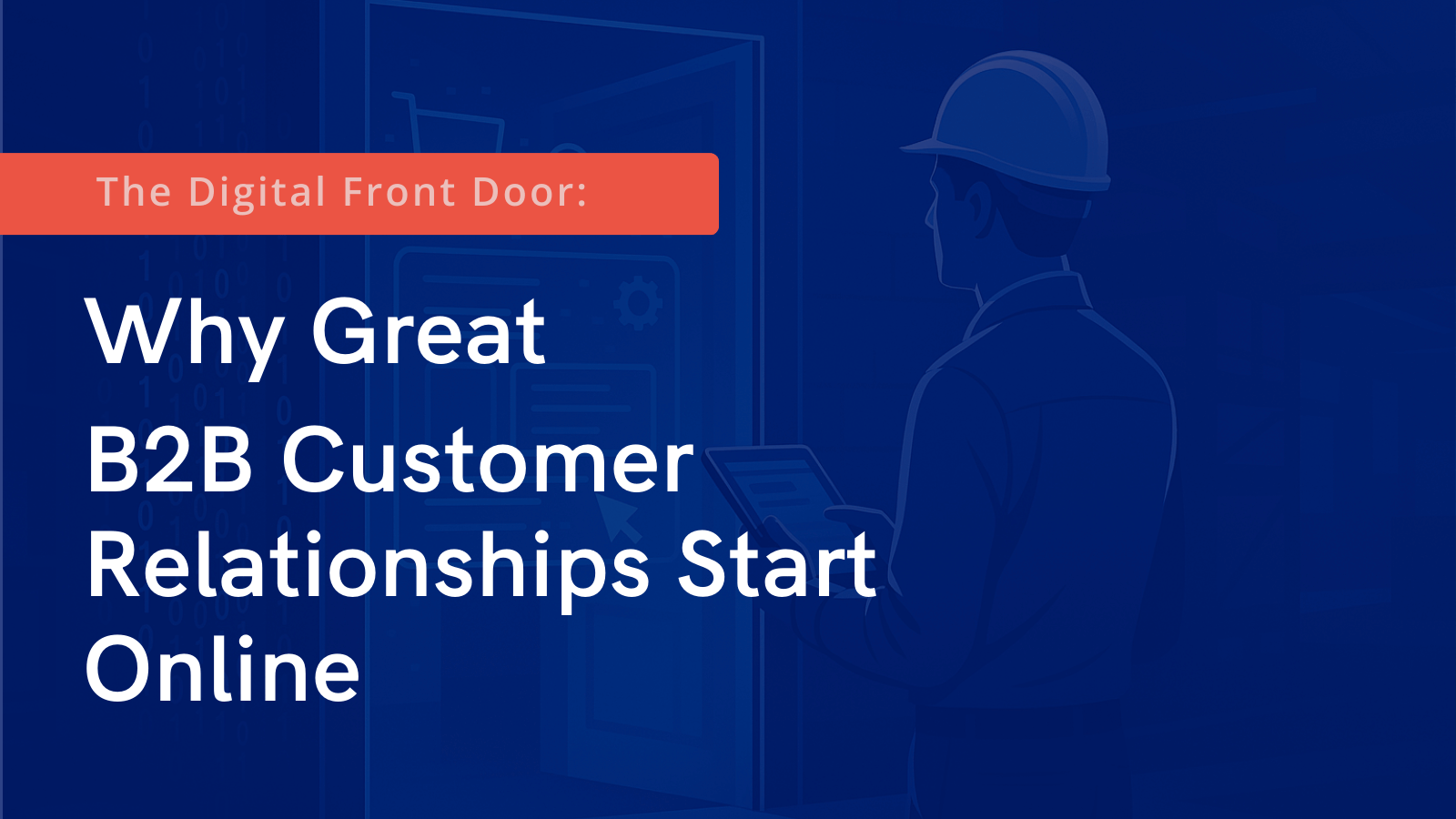Beyond ERP: Why Modern B2B Fulfillment Demands a New Level of Agility

For decades, the ERP has anchored manufacturing and distribution operations. It kept orders flowing, inventory accurate, and financials in check.
But the way customers buy and expect to be served has changed.
Today’s buyers want more than accurate invoices. They want speed, transparency, and control across every channel. Yet most ERP systems weren’t built for that world.
And that’s why the conversation around fulfillment is shifting.
From Transaction to Strategy
According to Gartner, most B2B companies still view order management as a back-office task, a function that simply routes orders once the deal is done.
But that definition is holding the industry back.
In a multi-channel world, fulfillment is not just about execution. It’s about strategy. It influences revenue growth, customer loyalty, and the ability to compete.
When buyers can’t see real-time stock, track delivery, or trust availability, they don’t wait. They switch.
The ERP Foundation – and the Fulfillment Gap
Your ERP remains the operational backbone. It keeps the business stable. But when it comes to orchestrating complex, multi-channel fulfillment, it needs reinforcement.
That reinforcement is an Order Management System (OMS).
An OMS doesn’t replace your ERP, it extends its value. It acts as enterprise-wide intelligence between your ERP, warehouse systems, and digital channels.
Think of it as the agility layer: the system that enables real-time visibility, smarter sourcing, and profitable fulfillment decisions at scale.
As Gartner describes it, an OMS serves as “highly functional middleware” – bridging the gap between sales complexity and ERP stability.
ERP + OMS = a stronger, more future-ready fulfillment backbone.
Why Fulfillment Needs a Rethink in B2B
Wholesale and distribution models are evolving fast.
Orders flow in through EDI, eCommerce portals, marketplaces, field reps, and direct-to-consumer channels.
Buyers expect retail-like precision: live stock data, clear delivery dates, and consistent communication.
When your ERP stands alone, cracks start to show:
- Inventory blind spots: stock sits idle in one location while another runs dry.
- Overpromising: customers place orders online, only to receive a backorder notice later.
- Manual firefighting: teams spend hours reconciling split orders and rekeying data between systems.
- Inflexible sourcing: the system can’t reroute orders to a site that could ship faster or cheaper.
- Partial shipments: freight costs climb and margins erode.
- Slow change cycles: adding a new channel or 3PL takes months instead of days.
Each of these pain points adds friction, and every bit of friction adds cost, risk, and lost trust.
Eight Capabilities That Change the Game
Here’s where an OMS transforms fulfillment from a cost center into a competitive advantage.
| OMS Capability | Business Impact |
| Real-Time Inventory Visibility | Aggregates stock across warehouses, 3PLs, and suppliers to prevent backorders and lost sales. |
| Optimal Sourcing Logic | Routes orders based on margin, speed, and cost— not just availability. |
| Complex Order Flow Management | Simplifies multi-part, multi-location orders with full traceability. |
| Multi-Channel Integration | Unifies orders from EDI, portals, reps, and marketplaces into one workflow. |
| Elastic Scalability | Absorbs seasonal surges without stressing legacy systems. |
| On-Time, In-Full (OTIF) Performance | Automates exceptions and drives predictable delivery. |
| Composable Agility | Makes it possible to adapt routing or business rules without destabilizing ERP processes. |
| Customer Transparency | Offers a single real-time view of orders, reducing “Where’s my order?” calls. |
This isn’t about more technology. It’s about giving your teams the tools to make faster, smarter, more profitable fulfillment decisions, at scale.
From Operations to Differentiation
In manufacturing and distribution, fulfillment used to be a cost of doing business. Today, it’s a source of competitive advantage.
B2B buyers expect the same clarity and reliability they experience as consumers. Meeting those expectations requires systems that can adapt quickly and deliver trust at every step.
An ERP gives you control.
An OMS gives you agility.
Together, they give you something even more valuable, the ability to serve your customers faster, more profitably, and with fewer surprises.
Because in this market, trust is the new differentiator. And trust is built on the promises you consistently keep.
For Leaders in Manufacturing and Distribution
If you’re leading digital strategy or operations, this isn’t just a technology conversation. It’s a business model conversation.
The companies that thrive are those that connect their ERP stability with OMS agility, not to manage orders, but to orchestrate customer experience.
That’s how you protect your margin.
That’s how you scale profitably.
That’s how you build a business that customers don’t just buy from, they rely on.







